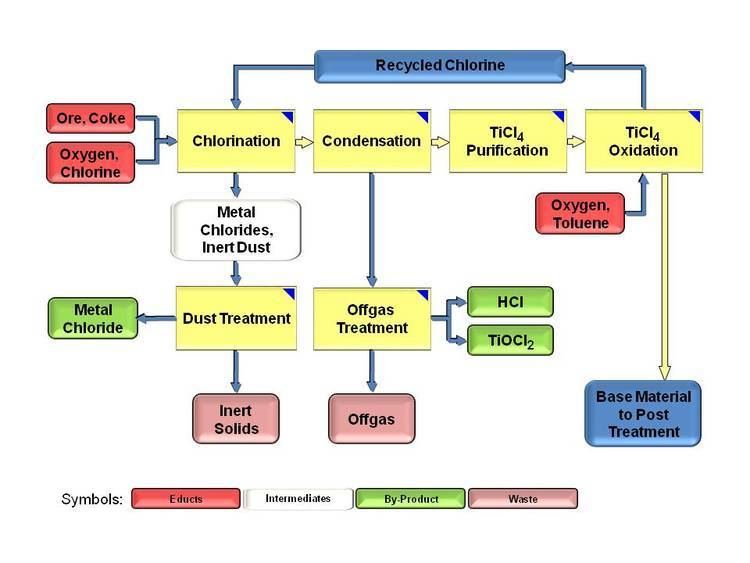 | ||
The chloride process is used to separate titanium from its ores. In this process, the feedstock is chlorinated at 1000 °C with carbon and chlorine gas, giving titanium tetrachloride. Typical is the conversion starting from the ore ilmenite:
Contents
2 FeTiO3 + 7 Cl2 + 6 C → 2 TiCl4 + 2 FeCl3 + 6 COThe process is a variant of a carbothermic reaction, which exploits the reducing power of carbon.
Other impurities are converted to the respective chlorides as well but they are less volatile than TiCl4. The titanium tetrachloride is purified by distillation. It can be subsequently oxidized in an oxygen flame or plasma to give the pure titanium dioxide. Alternatively, via the Kroll process, the purified titanium tetrachloride can be reduced with magnesium to give titanium metal.
The Standard Process
The standard chloride process for titanium dioxide base material consists of the following main production units:
Besides this the following auxiliary production units are necessary:
Under steady state conditions the chloride process is a continuous cycle in which chlorine changes perpetually from the oxidized state to the reduced state and reverse. The oxidized form of the chlorine is molecular chlorine Cl2, the reduced form is titanium tetrachloride (TiCl4). The oxidizing agent is molecular oxygen (O2), the reducing agent is coke. Both must be fed into the process. The titanium is fed into the process in form of titanium ore together with the coke. Titanium ore can be understood as a mixture of oxides from various metals mainly titanium. The added O2 leaves the process with the product TiO2, the added coke leaves the process together with the added oxygen from the titanium ore in form of CO and CO2. The other fed metals leave the process in form of metal chlorides.
Consumptions
The following consumptions per t of TiO2 can be assumed:
